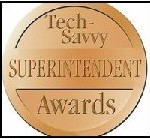
Project-based learning, “bring your own device” policies, blended learning opportunities, and creative approaches to staff development are among the many successful ed-tech programs being led by our 2012 Tech-Savvy Superintendent Award winners.
Sponsored by GlobalScholar and JDL Horizons, the 12th annual Tech-Savvy Superintendent Awards from eSchool Media recognize senior school district executives from around the nation who best exemplify outstanding leadership and vision in using technology to advance their district’s educational goals.
“Research suggests that technology can facilitate better teaching and learning, but only when used wisely,” said Dennis Pierce, editor of eSchool News. “And that starts at the very top, with strong school district leadership. If you have a clear vision for how to implement technology effectively, and you make sure your staff are well trained and supported, and you seek to transform instructional practices to leverage technology’s full potential, then technology really can empower education. And that’s what the winners of our annual Tech-Savvy Superintendent Awards are doing.”
As educators come to rely on technology and the internet to engage students’ interest, track their progress, personalize instruction, and aid in decision making, an understanding of how technology works and how it can be used to transform teaching and learning is now an essential characteristic for the 21st-century school superintendent. eSchool News created its awards program in 2001 to recognize and encourage this quality.
Chosen by the editors of eSchool News with help from last year’s winners, the 2012 award winners will be honored in a private ceremony held in conjunction with the Century Club 100 meeting at the American Association of School Administrators’ annual conference in Houston Feb. 18. The ceremony will feature a keynote speech by noted ed-tech consultant Alan November. Any superintendent is invited to attend with his or her staff; for details, please eMail Shana Murik at smurik@eschoolnews.com.
To meet this year’s winners, and learn how they’re leading exemplary ed-tech programs in their districts, read on. For a list of the criteria we use in judging these awards, click here.
Andover Public Schools (USD 385)
Andover, Kansas
Evans is passionate about the many applications of technology for K-12 education and understands that students are technology natives. In tough budget times, he has used technology to improve efficiencies and hold down costs.
Upon joining the district seven years ago, Evans began expanding the use of technology not only in student learning, but also in district communications and management. When Evans arrived, Andover Public Schools had 2,500 students in six independently operating schools. Today, it has 5,200 students in 11 fully integrated schools, including its two-year-old virtual school. And student achievement has increased along with technology use: In 2011, the average ACT composite score of the district’s students was 23.9, compared to a state average of 22 and a national average of 21.1.
Over the past five years, Andover’s technology advancements include high-definition video surveillance for keeping its schools safe; Alio integrated business software; a VBlock data center for virtual computing; use of social media tools such as Edmodo, Facebook, and Twitter to communicate with students and stakeholders; online human resources and enrollment applications; School Messenger notification system; Promethean ActivBoards in classrooms; BoardDocs meeting software; podcasting; and interactive collaboration labs.
Andover Public Schools was named the No. 1 school district in the nation in the medium-size category (2,501 to 15,000 students) in the 2008 Digital School Districts Survey, presented by the Center for Digital Education and the National School Boards Association. The district tied with Virginia’s Henrico County Schools in this category.
Evans also serves as vice chair of the Kansas State Department of Education’s Virtual Education Advisory Council.
Sioux Central Community School District
Sioux Rapids, Iowa
As one of the state’s leaders in integrating technology into instruction, Frazier is in his sixth year as superintendent of the Sioux Central Community School District. The district provides laptops, iPods, and iPads for students in pre-kindergarten through third grade, and it operates a one-to-one laptop program for grades 4-12. By standardizing devices, all students have equal access to online resources as well as hardware and applications.
Professional development has been a key to the laptop initiative’s success, and Frazier knows that teachers’ comfort level will dictate how often and how effectively technology is used. Toward this end, Frazier created the position of technology integration specialist within the district. This teacher’s primary duty is to provide ongoing support in ed-tech integration for classroom teachers. To help support classroom instruction, Frazier also created a new district website where every teacher has access to powerful interactive web tools.
The school board conducts paperless meetings and posts agendas online, linking each agenda item to information and documentation advising the board’s actions. Under Frazier’s leadership, the district actively engages in social media, maintaining a Facebook page, a Twitter account, and a YouTube channel. An active blogger himself, Frazier recently had his blog featured in the January 2012 issue of AASA’s School Administrator magazine.
Colorado Springs School District 11
Colorado Springs, Colorado
One of Gledich’s first moves as leader of Colorado Springs School District 11 was bringing wireless access to all district schools. The district now encourages students and teachers to bring their own devices to school. Schools also are encouraged to purchase iPads, eReaders, and other tools to support student learning with technology.
The district has levy funding in place specifically to support technology integration equitably in all classrooms, and this funding is used annually to refresh computers and other technology in the schools.
Although budgets have been an issue in Colorado and nationwide for several years, Gledich hired a grants director who has helped bring in more funding for two schools with high-need students. He also supported the district’s first common District Professional Development Day in September.
Gledich asked educators how they ensure that 21st-century learning is occurring in all classrooms for all students, and district staff subsequently developed a 21st Century Personalized Learning Vision and Strategic Planning program. This program aims to create and document an instructional technology vision aligned with the International Society for Technology in Education’s National Educational Technology Standards, as well as Colorado state standards.
Ed-tech programs used within Colorado Springs classrooms include Accelerated Reader, CompassLearning Odyssey, Discovery Education streaming, Sharepoint, SAFARI Montage, ST Math, i-SAFE, and WorldBook Web.
Kenosha Unified School District
Kenosha, Wisconsin
Hancock leads the Kenosha Unified School District with a strong vision to improve student achievement through 21st-century transformation. Her first efforts were to establish a transformation plan with 15 action items, including online collaborative work environments for staff and students, empowering students to safely navigate digital environments, expanding opportunities for project-based learning and global connections through technology resources and tools, and providing equal access to hardware and software to support personalized learning experiences.
Hancock continually challenges her leadership administration to consider blended learning opportunities that use technology resources. She similarly challenges them to explore personalized learning through technology. Within six months of assuming the superintendency, she decided to allow personal electronic devices in the classroom for student learning; updates to the district’s acceptable-use policy followed last spring.
Hancock also encourages district staff to model effective uses of technology tools and resources and always uses both in her presentations to staff, students, the school board, and the community. She encourages and supports social media communication to the parents and community.
Besides initiating discussions about online textbooks, she also has championed efforts to implement a self-service portal for employees, eliminating the need for paper processing of employee benefits, check stubs, and personal changes. She also implemented electronic procurement software to automate the entire purchase-to-pay process.
Fresno Unified School District
Fresno, California
Hanson has used technology to completely revamp district operations and student achievement. He meets with other superintendents across the state using a Cisco Telepresence video conferencing network that he created to improve communication between districts and reduce travel costs, and a district initiative called Foundations involves revamping lesson plans and curriculum. District tech leaders developed a new system in Sharepoint to help support this initiative.
Hanson also supported a digital portfolio project that put laptops in 350 classrooms. Through a variety of funds, more than 2,000 interactive whiteboards, 16,000 netbooks, and 3,000 video projectors have been purchased and deployed over the past four years. The district has leveraged eRate funds to connect each school to a high-speed network with fiber-optic lines and a 1 Gbps connection to the internet—with the capacity to go to 10 Gbps.
Hanson supervised creation of the district’s five-year technology plan, whose goals include one-to-one computing for students; video projectors and wireless laptops or tablets for all teachers; having 45 percent of students involved in online or blended-learning environments; online portfolios for all students; professional development to support 21st-century teaching and learning; internet and digital communication safety for staff and students; and a student analytics system to give teachers real-time analysis of student performance and recommendations for moving each cluster of students forward in student achievement.
A technology audit five years ago revealed that the district’s technology ranked among the worst in the state, prompting Hanson to dedicate the necessary resources to turn the situation around. The district now ranks in the top five in the state in terms of technology.
Joplin Schools
Joplin, Missouri
After an EF5 tornado destroyed much of Joplin, Huff’s exemplary leadership skills guided the school district community back to a sense of normalcy in record time. He not only resolved to make sure that Joplin schools opened on time this past fall, but he determined to rebuild the district’s schools with a focus on 21st-century learning.
Huff immediately recognized an opportunity to launch the school year without the use of textbooks (because all high school books were destroyed), using a curriculum focused on learning with open educational resources. Closely tied to this strategy was a decision to move to a one-to-one computing initiative, as all 2,200 high school students received MacBooks as their 24-7 learning tools at the beginning of the 2011-12 school year.
An intense professional development plan was implemented during the summer of 2011 to help teachers in their transition. All Joplin teachers went through a minimum of 60 hours of professional development to ensure these ed-tech resources would be used effectively.
Huff also encouraged a pilot program for the 600-student middle school that was destroyed in the storm. The teachers in this middle school now use iPads and the application Doceri to engage their students in classroom instruction and collaboration.
Centre School District
Lost Springs, Kansas
Thanks to Kemble’s leadership, Centre School District is a pioneer in using technology. Kemble attended a White House meeting on technology and virtual learning in 2010, and in 2011, Vice President Biden’s office asked to meet with her again to get an update on the district’s technology progress.
Despite a struggling rural economy, the district experienced a 26-percent population increase and created nine part-time teaching positions and one full-time virtual school coordinator position last year. The district also added 250 class offerings to its high school students.
Through virtual education, Centre students now have the opportunity to take classes such as Biotechnology, Graphic Design, New Solar Technology, and Chinese. The Kansas Online Learning Program has taken in students from across the state of Kansas.
During Kemble’s four years as superintendent, the district has implemented a one-to-one laptop program at the high school; a two-to-one laptop program in grades 5-8; a one-to-one iPad program in grades 3-4; and a two-to-one iPod Touch program in grades K-2. The district operates a web-based student information system and uses wikis, Skype, and Blackboard for staff development, as well as Gmail for all staff and students. Kemble is not only the superintendent, but also the Virtual Program Leader.
Kemble holds informative sessions to help parents understand how various technology tools will be used in classrooms. She encourages district staff to reach out and not only learn from other districts, but share their technology expertise.
Each Tuesday, a technology integration specialist comes to the district to help teachers integrate technology into the curriculum. Each year, Centre and four area school districts gather to celebrate technology at the Technology Excellence in Education Mash-up.
Cashton Public Schools
Cashton, Wisconsin
In the rural setting of Cashton, Wis., Saron has helped make his school system a leader in innovative and research-based practice.
Through careful integration of local, state, and federal programs to minimize waste, along with conservative budgeting and a voracious pursuit of public and private grants, Cashton has been able to invest in many technology tools. With the support of a dedicated school board and community, Saron has equipped each classroom in the district with an interactive whiteboard, full wireless access in all district buildings, numerous mobile laptops, iTouch devices and iPad 2 labs, and even SMART Tables in each of the four-year-old kindergarten classrooms.
Through Google Apps for Education, all staff members have the resources to create websites, shared documents, interactive forms, eMail, and cloud-based data storage—and so do students. Saron also commits the necessary resources to maintain and update available hardware and software, and he provides the professional development required to fully leverage technology’s potential. Besides providing resources for off-site training, he ensured that district staff would have continuous on-site support in adopting technology tools by creating a full-time technology integration coach.
Using shared public Google calendars to schedule all events, facilities, and resources has proven invaluable for Cashton. From any internet-capable device, employees can access information that once required a phone call or a trip to the district or building office. The schedule of school or district events, the availability of school buses or vans, the location of the mobile computer or iPad labs, the name of a scheduled substitute teacher, and much more are all available with just one of the Google tools.
Oxford Community Schools
Oxford, Michigan
During the past four years, Skilling has led district administrators and the Oxford community at large to develop and implement a new, five-year strategic plan to jump-start technology-driven educational initiatives.
Skilling spearheaded the effort to transform the district’s strategic plan to reflect a new direction in education—to enable students to compete in a 21st-century global workforce. The district has harnessed technology to build an advanced learning environment in support of this goal.
OCS encourages and provides the tools necessary for all educators to teach in a hybrid format, which integrates both traditional and online components. Hybrid learning options empower the district to take advantage of both technology’s and teachers’ strengths in order to benefit students, instructors, and administrators.
Technology tools such as secure blogging, podcasting, and social media are now used to encourage collaboration and research between students within OCS. For example, by using MP3 players, students in a health class record statistics such as their heart rate and share the data with math students for use in their learning.
To further a new model of global education, Skilling launched an ambitious, district-wide, four-year International Baccalaureate diploma program, requiring all district schools to be IB accredited by fall of 2012. To accomplish this goal, OCS administrators purchased new curriculum technologies, including digital cameras and interactive whiteboards, and supplied both online and face-to-face training for using the equipment to deliver the new IB-driven curriculum.
In 2011, Skilling encouraged the development of the Concept Plan for Professional Learning, which articulates long-term professional development strategies for faculty. The district offers technology skills training sessions and technology tools workshops to empower teachers to create new learning experiences for students by leveraging technology.
Oak Hills Local School District
Cincinnati, Ohio
Under Yohey’s leadership, school leaders have infused state-mandated core curriculum standards with career-ready skills. At a time of rising technology costs and declining budgets, Oak Hills is one of the first public school districts in Ohio to welcome the use of outside, student-owned technology in the school.
At Yohey’s direction, the district moved to a virtual environment, deploying VMWare View 4.5 on a Cisco and NetApp VDI architecture, enabling high school students to access essential curriculum and learning tools anywhere, any time, from any device. Some devices were purchased and made available for student use to ensure equitable technology access.
District representatives have been invited to speak across the state and the country at conferences such as eTech Ohio, VMworld 2011, and the K-12 Technology Summit. The district also received the 2011 Innovator of the Year Award for the U.S. Public Sector from NetApp. Yohey models effective technology use in his own day-to-day work, whether it’s the wiki he created to interact with the board, using shared documents through Google Apps for Education, or using the district’s many social networking sites.
Oak Hills has implemented many ed-tech initiatives and pilots, such as a district-wide move to Google Apps for Education, increasing access to tools and collaboration while decreasing costs; student ePortfolios for K-12; online courses in health, Spanish, and Mandarin Chinese; blended learning courses in world history, English, sociology, and introduction to engineering; a live online broadcast of district athletic events; and eZPay, in which parents pay fees and complete forms online.
- Schools and Districts Nationwide Partner with TinkRworks to Engage Students in STEAM Project-Based Learning - November 22, 2024
- BusPatrol Recognized Among Fastest-Growing Companies in North America on the 2024 Deloitte Technology Fast 500™ - November 21, 2024
- Illustration, Comic & Animation App Clip Studio Paint Named Best for Large Screens by Google Play - November 19, 2024

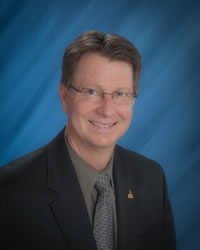
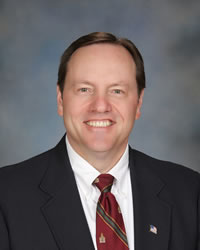
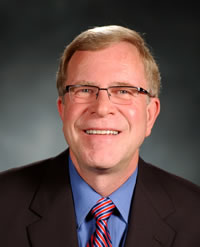

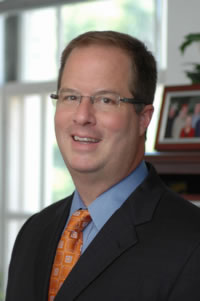
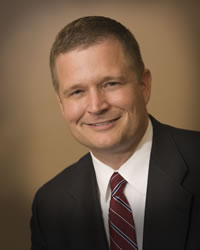

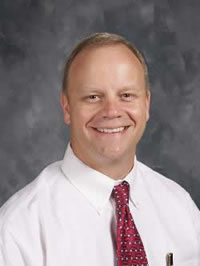
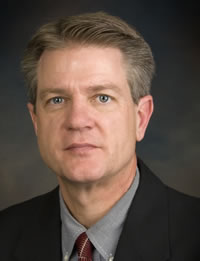


Comments are closed.